Amethyst and quartz are two of the most popular gemstones in the world and are often used in jewelry. But are they the same thing? Is amethyst a type of quartz? It’s a question that confuses many people. In this section, we’ll take a closer look at these gemstones and help you uncover the truth.
Key Takeaways
- Both amethyst and quartz are popular gemstones used in jewelry.
- Amethyst is a type of quartz, specifically a purple variety.
- Amethyst and other types of quartz have both similarities and differences.
Understanding Quartz and Amethyst
If you’re familiar with crystals and gemstones, you’ve likely heard of quartz and amethyst. Both of these minerals are popular in jewelry and spiritual practices. While they share similarities, there are also distinct differences between the two.
What is Quartz?
Quartz is a mineral that is abundant in the Earth’s crust. It is composed of silicon and oxygen atoms, making it a silicate mineral. Quartz comes in many different varieties, including clear quartz, rose quartz, and smoky quartz. It is known for its durability and hardness, making it a common material in construction and technology.
What is Amethyst?
Amethyst is a purple variety of quartz. It gets its color from the presence of iron and manganese ions. Amethyst is often used in jewelry and is known for being a powerful stone in spiritual and healing practices.
While amethyst is a type of quartz, not all quartz is amethyst. There are many other varieties of quartz that are not purple. Some other types of quartz include citrine, tiger’s eye, and agate.
Physical Attributes
Both quartz and amethyst have a hexagonal crystal structure and a hardness of 7 on the Mohs scale. Quartz has a transparent to opaque appearance and can come in a range of colors. Amethyst, on the other hand, has a transparent to translucent appearance and is mostly purple in color.
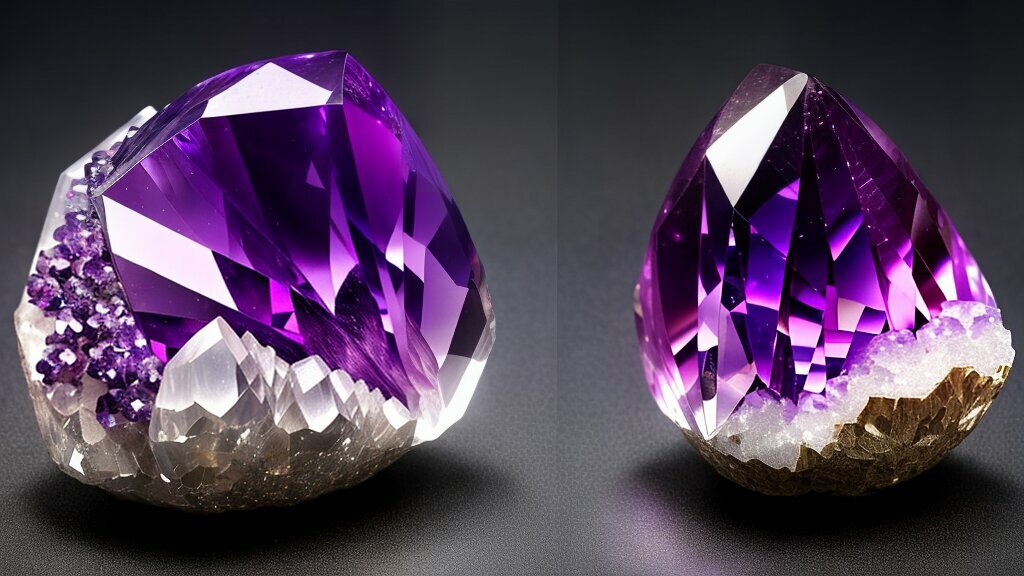
Geological Formation
Quartz is formed from cooling magma or by the precipitation of silica in sedimentary rocks. It is found all over the world and is one of the most abundant minerals on Earth. Amethyst is formed from the same process as quartz, but with the addition of trace amounts of iron and manganese. It is often found in geodes and volcanic rocks.
Both quartz and amethyst can be found in many different locations around the world, including Brazil, Uruguay, and the United States.
The Different Types of Quartz That Include Amethyst
Amethyst is just one variety of quartz, but there are many others that include amethyst as a component. Some of these varieties include:
- Amegreen – a combination of amethyst and green aventurine
- Ametrine – a combination of amethyst and citrine
- Prasiolite – also known as green amethyst, formed from heat-treated amethyst
Each of these varieties has its own unique properties and characteristics.
The Amethyst-Quartz Connection
When it comes to determining whether amethyst is a type of quartz, there is some speculation. However, many experts consider amethyst to be a variety of quartz due to their shared chemical composition and similar crystal structure.
Both amethyst and quartz are made up of silicon dioxide, with amethyst containing trace amounts of iron that give it its distinctive purple color. Quartz, on the other hand, comes in a range of colors depending on the presence of other minerals, but is typically clear or white.
While amethyst is a unique type of quartz, there are many other varieties of quartz that differ in color, shape, and formation. Some common types of quartz include rose quartz, smoky quartz, and citrine.

Despite these differences, amethyst and other types of quartz share many physical and metaphysical properties. They are both commonly used in jewelry, as well as in various industrial applications such as electronics and construction.
“Amethyst is considered a powerful and protective stone with healing properties that promote tranquility, inner peace, and spiritual awareness.”
Whether you’re interested in the science or metaphysics of amethyst and quartz, one thing is clear – these stones are truly fascinating and offer a wide range of benefits and uses.
Exploring the Uses of Amethyst Quartz
Amethyst quartz is a popular gemstone that has been treasured for centuries. Its unique violet hue has made it a highly valued addition to jewelry, and its spiritual and healing properties have made it an essential in many traditions and belief systems.
One of the most common uses of amethyst quartz is in jewelry. Due to its beautiful color and durability, amethyst is often used in rings, necklaces, bracelets, and earrings. Many people wear amethyst jewelry not only for its aesthetic appeal but also for its spiritual and healing properties.
Amethyst is also believed to have powerful calming and healing effects on the mind and body. It is said to promote tranquility, balance, and peace of mind, making it a popular choice for meditation and relaxation practices. It is also thought to aid in physical healing, particularly in relieving headaches, insomnia, and other stress-related conditions.
In addition to its use in jewelry and spirituality, amethyst quartz also has various industrial applications. It is commonly used in the production of semiconductors, as well as in the manufacturing of glass and ceramics. Its unique purple color can also be used as a natural dye in the textile industry.
Overall, amethyst quartz is a versatile gemstone that can be used in a variety of ways. Whether you’re looking for a beautiful piece of jewelry, a tool for meditation and healing, or a substance for industrial applications, amethyst quartz is a valuable and meaningful choice.

Different Types of Amethyst Geodes
Amethyst geodes come in a variety of shapes and sizes, each one displaying its unique formations and color variations. The following are some of the most common types of amethyst geodes:
| Type | Description | Image |
|---|---|---|
| Cathedral | The largest and most dramatic type of amethyst geode, characterized by tall, pointed crystals that resemble the spires of a cathedral. |  |
| Botryoidal | A grape-like cluster of amethyst crystals that form a rounded shape, resembling a cluster of grapes. | 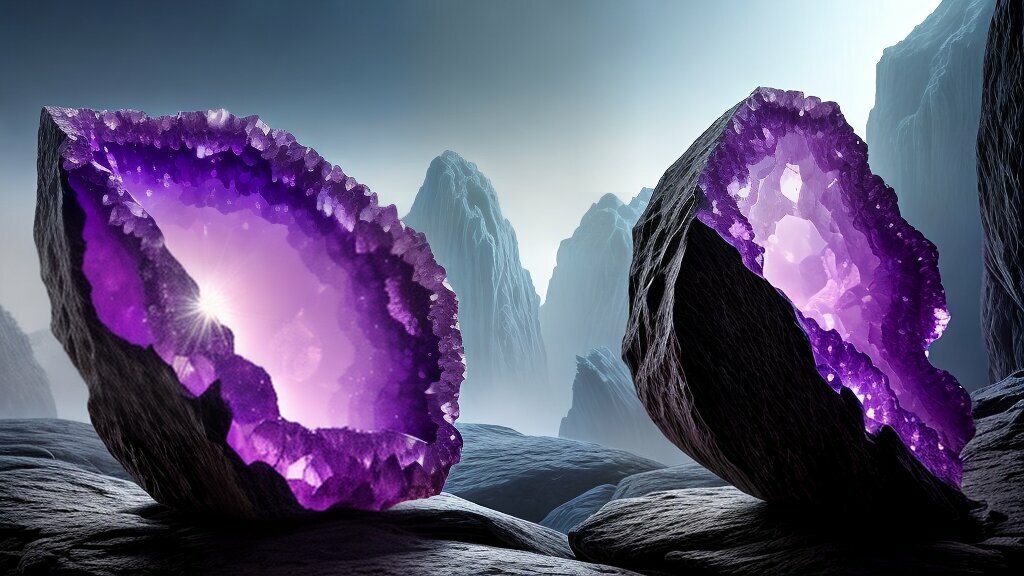 |
| Druzy | A geode with thousands of tiny sparkling crystals covering its surface, forming a glittering layer that shimmers in the light. | 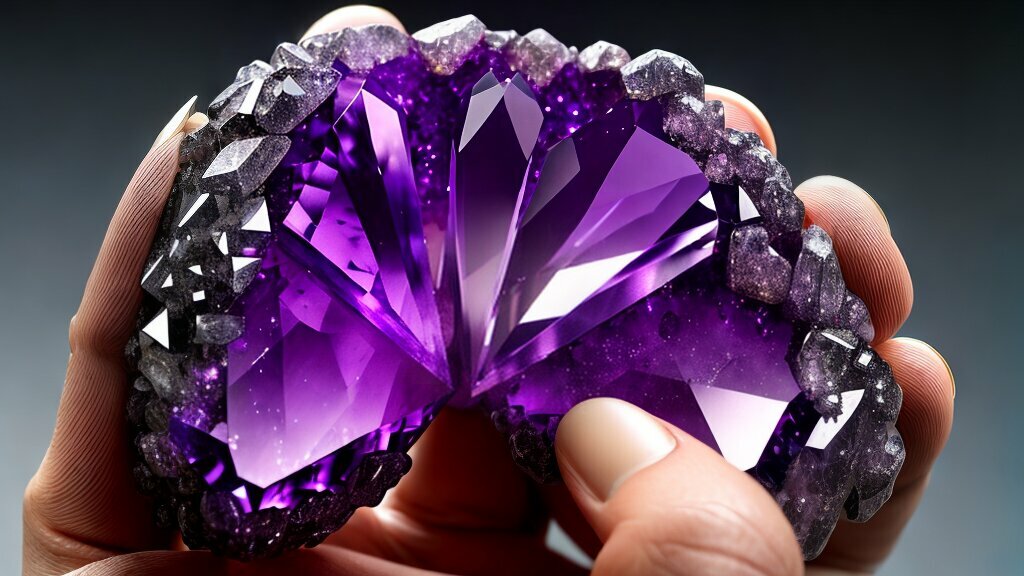 |
| Celestial | A type of amethyst geode with small, pointed crystals that resemble a starry sky. | 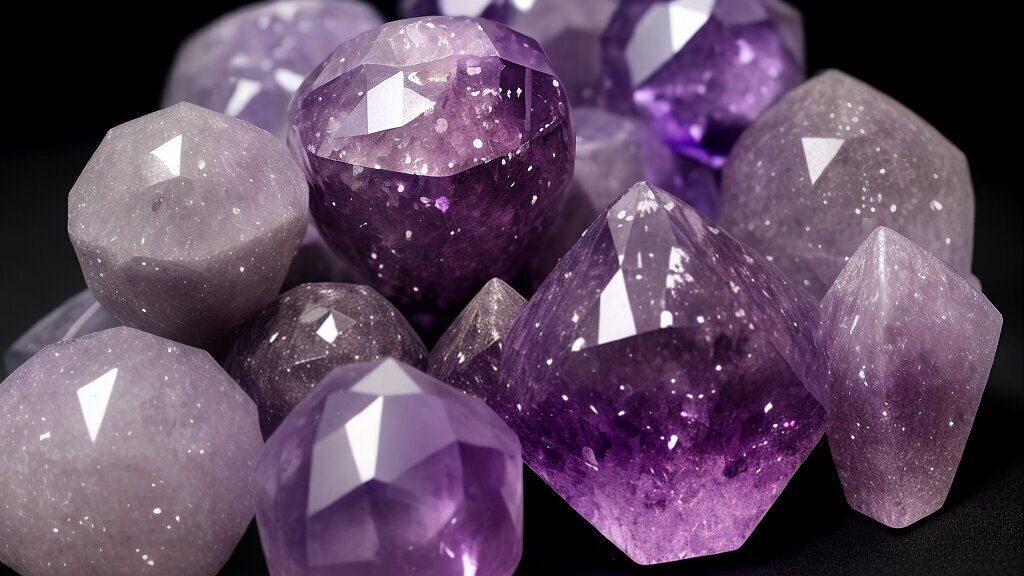 |
Geodes can also be found in various shades of purple, from light lilac to deep violet. The coloration of the geode depends on the presence of iron and manganese in the surrounding rock formations. Some geodes may also contain other minerals such as calcite or agate, adding to their unique appearance.
Whether you’re a collector, healer, or simply appreciate the natural beauty of gemstones, there’s an amethyst geode out there for everyone.
Conclusion
In conclusion, amethyst and quartz are closely related but are not exactly the same. Amethyst is a type of quartz that differs only in its coloration due to the presence of iron and manganese. Both quartz and amethyst have unique physical and chemical properties that make them valuable in various industries, including jewelry-making and technology.
Amethyst quartz is also believed to possess spiritual and healing properties, making it a popular gemstone among people who seek balance and harmony in their lives. Its uses extend beyond aesthetics, as it is used in alternative medicine practices for its calming and soothing effects.
Amethyst geodes come in different types, with each type having unique properties and characteristics. The formation of amethyst geodes is a natural process that takes millions of years to occur, resulting in varying colors, shapes, and sizes.
In summary, amethyst and quartz are fascinating gemstones that have intrigued humans for centuries. They possess beauty, durability, and unique properties that make them valuable in various fields. Whether you appreciate their aesthetics, spiritual properties, or scientific significance, amethyst and quartz are fascinating stones worth exploring.
FAQ
Q: Is amethyst a quartz?
A: Yes, amethyst is a type of quartz.
Q: Are amethyst and quartz the same?
A: Amethyst is a specific variety of quartz.
Q: What is the difference between amethyst and quartz?
A: The main difference between amethyst and other varieties of quartz lies in their color. Amethyst has a purple hue, while other quartz varieties can have a range of colors or be clear.
Q: Can amethyst be classified as a type of quartz?
A: Yes, amethyst falls under the category of quartz.
Q: What are the uses of amethyst quartz?
A: Amethyst quartz is commonly used in jewelry, for its spiritual and healing properties, and in various industries.
Q: What are the different types of amethyst geodes?
A: Amethyst geodes come in various types, with unique formations, color variations, and characteristics.
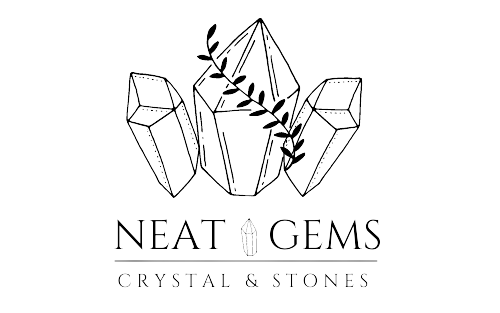
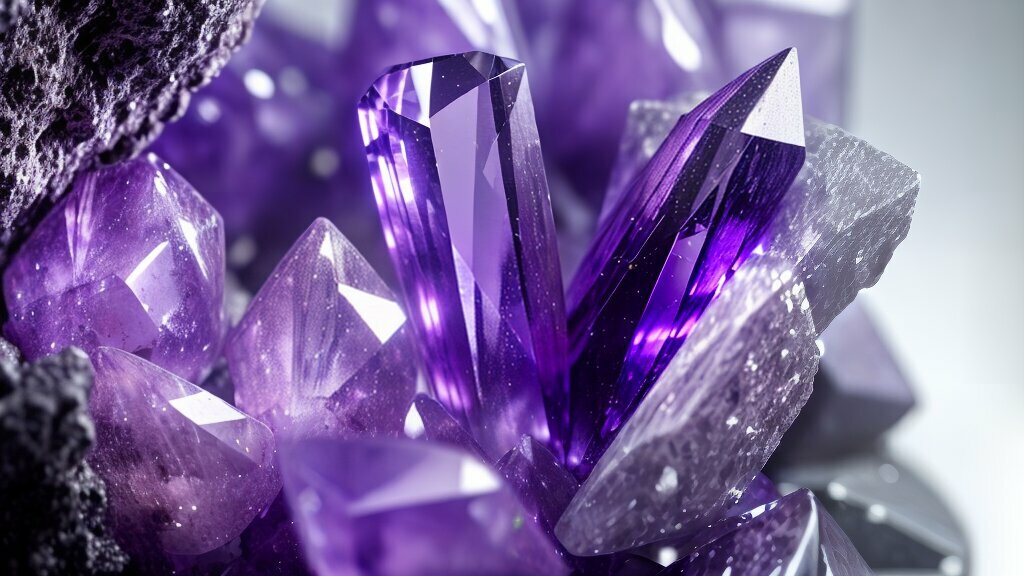
Leave a Reply